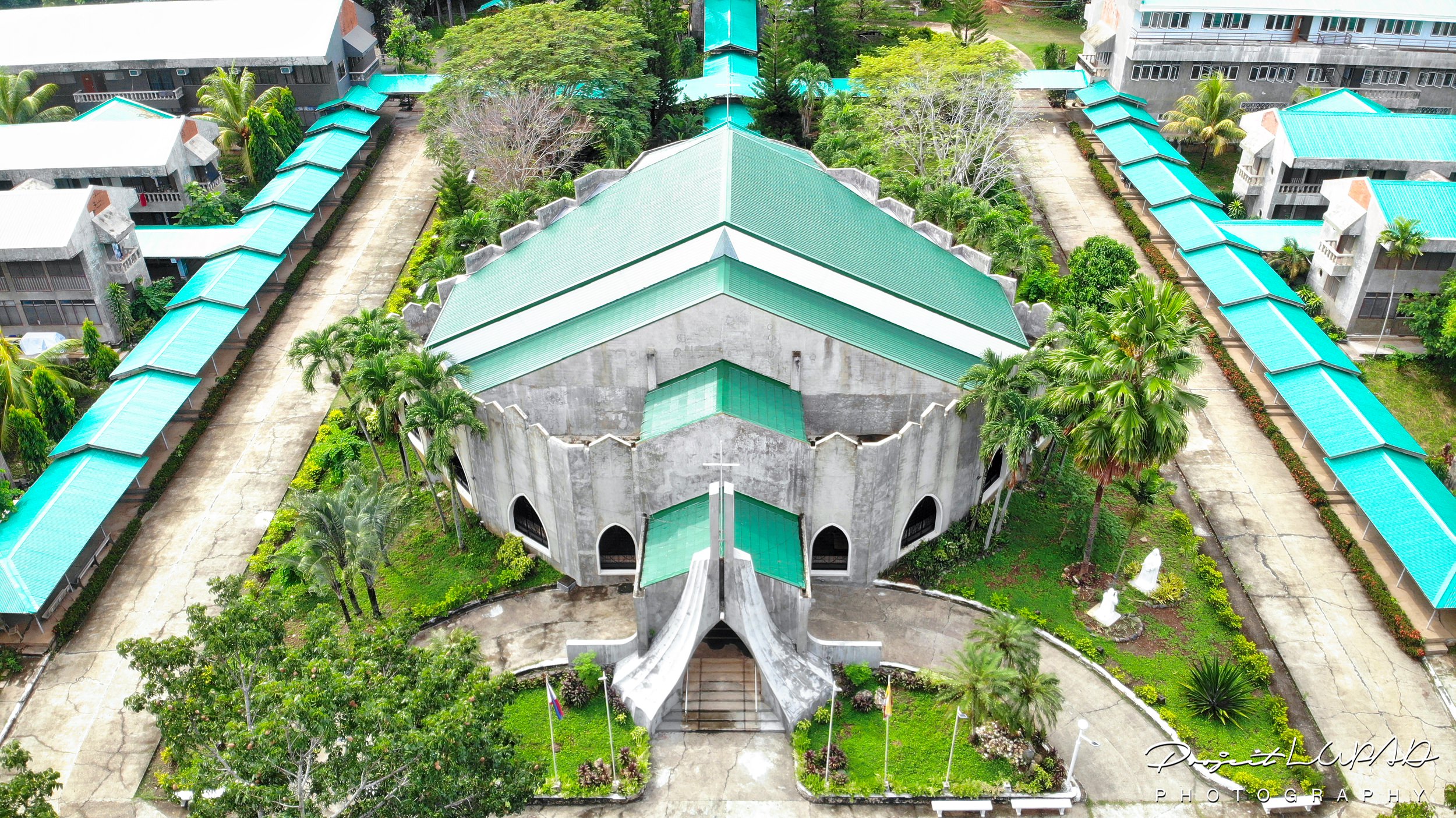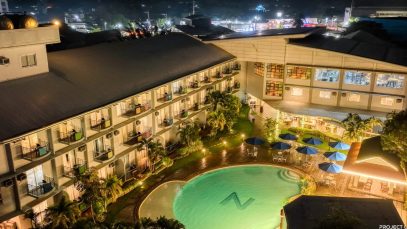
Vianney CDO: The Green Seminary
A glimpse of the St. John Vianney Theological Seminary in Cagayan de Oro and its wide green habitat as seen in the photos below.
St. John Vianney Theological Seminary (SJVTS) is a regional theological seminary owned by the Ecclesiastical Province of Cagayan de Oro (comprising the Archdiocese of Cagayan de Oro and the diocese of Butuan, Surigao, Tandag, and Malaybalay). SJVTS opened in 1985 and was named after St. John Marie Baptist Vianney, the Patron Saint of All Priests.
SJVTS is the “green seminary”, not only in green roofs but, also in the lush vegetation that nestles it. SJVTS is home to a wide variety of trees and plants which it seeks to preserve and protect. Ecological in its outlook and orientation, SJVTS is gradually shifting to renewable energy, developing sustainable practices, and designing a cosmic walk in the campus as a symbol of its commitment to care for the earth, our common home.
St. John Vianney Theological Seminary is located in Seminary Hill, Cagayan de Oro, Misamis Oriental, Philippines 9000.
Here are some aerial photos of St. John Vianney Theological Seminary.





History and Profile
The bishops of CaBuSTaM appealed to the Province of the Society of Jesus (the Jesuits), whose missionaries served as pioneering evangelizers of these parts of Mindanao, to administer the St. John Vianney Theological Seminary. In spite of the shortage of personnel, the Jesuits accepted the task to operate and maintain the seminary according to the need of the Mindanao church. Undoubtedly, this crucial ministry is the Jesuits’ very important particular contribution to the southern Philippine church.
SJVTS started to operate on June 10, 1985, with its thirty-seven (37) pioneering seminarians. The first diaconate ordination took place in 1989, and the first batch of priest-graduates was ordained in 1990. Bishop Jose Araneta Cabantan, who was appointed Bishop of Malaybalay on February 18, 2010, belongs to the first batch of SJVTS alumni. Subsequently, the seminary continues to produce priests who serve in various dioceses in Mindanao and Bohol.
SJVTS also operates as a graduate school open to religious and lay extern students who have finished their bachelor’s degree and wish to acquire a deeper theological training in Catholic faith and tradition. Since 1993, its Graduate Theology Program educates the theology teachers for colleges and universities and trains church workers as professional catechists. It also prepares religious men and women towards competent theological research in special areas of the apostolate. As a graduate school, SJVTS offers four kinds of civil degrees for both divinity and non-divinity tracks:
Master in Pastoral Ministry (non-thesis program), Master in Theology (non- thesis program), Master of Arts in Pastoral Ministry (thesis program), and Master of Arts in Theology (thesis program).
Over the years, SJVTS has been accommodating Mindanao seminarians outside the CaBuSTaM region, as well as seminarians from other Asian countries (Myanmar or Burma). It also welcomes the seminarians from Dei Verbum Fraternity, the Poor Servants of the Divine Providence (Calabrians), the Sacred Heart Fathers and the Third Order Regulars of St. Francis for their theological formation.
Since 1999, SJVTS has been blessed by the addition of competent diocesan formators – most of whom are themselves alumni of our seminary – and in 2005 welcomed its first lay formator. In the coming years, we hope to swell the number of our diocesan formators.
After more than twenty-five years since its establishment, St. John Vianney Theological Seminary renews its commitment to the integral formation of seminarians and to the holistic training of lay and religious church workers. They instill in their alumni unswerving loyalty to the Roman Catholic tradition and active engagement in the promotion of inculturation and interreligious dialogue in the context of tri-people (Christian-Muslim-Lumad) communities. Aware of its humble beginnings in 1985, they are deeply grateful for becoming a full-blown seedbed of vocations to the priesthood. They continue to move on as they embrace the enormous task of evangelizing not only the islands of Mindanao but also the Philippines as a whole and the rest of Asia.
About St. John Vianney
Called the “Cure of Ars”, St. John Vianney was the son of a poor farmer in Dardilly, France. He worked as a shepherd and didn’t begin his education until he was 20 years old. While an ecclesiastical student he was called for military service, and became a “delinquent conscript” more or less because of illness, and hid to escape Napoleon’s police.
He had difficulty learning Latin and twice failed the examinations required before ordination. He was finally ordained at the age of 30, but was thought to be so incompetent he was placed under the direction of Fr. Balley, a holy priest in a neighboring village, for further training.
St. John lived an austere life, ate potatoes he boiled, and learned to keep suspended by a rope from the ceiling, so the rats wouldn’t get to them. He allowed himself 2 hours of sleep each night and was frequently interrupted by the devil, who assaulted him with deafening noises, insulting conversation, and physical abuse. These diabolical visitations were occasionally witnessed with alarm by the men of the parish, but the pious Cure accepted the attacks as a matter of course and often joked about them.
St. John was given many spiritual gifts, such as the power of healing and the ability to read the hearts of his penitents. It was this latter gift that caused his fame to spread throughout France and created large crowds seeking guidance from him.
The frail Cure began hearing confessions at 1 o’clock in the morning, and it has been reported that he spent from 13 to 17 hours a day in the cramped confessional.
St. John died peacefully on August 4, 1859. His body was exhumed because of his impending beatification and was found dried and darkened, but perfectly entire.
St. John Vianney, who as a student had difficulties being accepted for the priesthood, was canonized in 1925 and was named later the Patron of Parish Priests throughout the world.
More information on St. John Vianney can be obtained from The Cure of Ars, by Fr. O’Brien, or The Incorruptibles, Joan Carroll Cruz.














